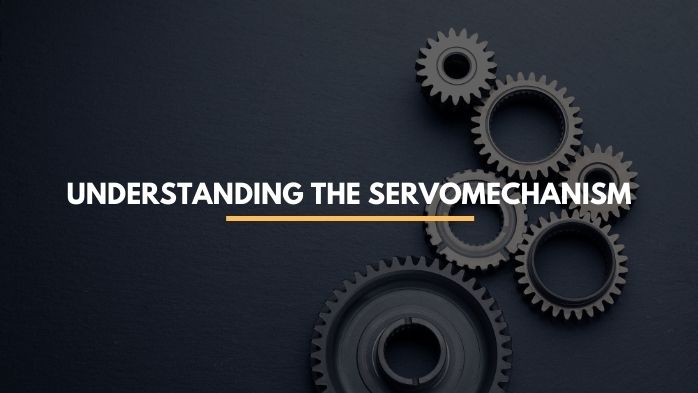The Forgotten Manual for Inner Growth: Psycho-Cybernetics Unpacked
“Man is by nature a goal striving being…he is not happy unless he is functioning as he was made to function – as a goal striver.” – Maxwell Maltz, Psycho Cybernetics
Human beings are the only creature that can set and achieve constructive goals.
It’s the only reason why civilization exists.
Setting and achieving constructive goals are the difference between a happy and unhappy life. But that’s not all… I’ve also got some good news and bad news.
The bad news: you are programmed to achieve certain goals.
The good news: you are programmed to achieve certain goals.
This programming is determined by “psycho-cybernetics”. This article is a quick overview of work of Maxwell Maltz’s Psycho-Cybernetics and how you can program yourself to achieve your goals and be a “success type personality”.
Why Does This Book Still Matter?
In a world full of “tips”, disconnected tactics, self-help fluff and endless mental chatter, the timeless principles in Psycho-Cybernetics still reign supreme. This is because it is the ground work behind deep, timeless principles of mental reprogramming. It is based off of universal principles of nature.
In fact, many books either ripped off of Psycho-Cybernetics outright or use the book as a serious source of “inspiration”. Besides Think & Grow Rich, it can be considered the root of modern self-help. No tricks, no hacks, no gimmicks – just identity-based change that works.
Therefore, it is an essential read and understanding for any person who is serious about inner power, transformation, and elite performance.
Who Was Dr. Maxwell Maltz?
Maxwell Maltz’s backstory is quite interesting.
A plastic surgeon by trade, Maxwell Maltz would seemingly (on the surface) be the last person concerned with inner realignment. But he found himself exploring it anyway. This is because he had some patients walk away after world-class plastic surgery feeling as if they were still “ugly” or that “something was wrong with their face” or that the surgery “didn’t work”.
As someone who took his craft very seriously and was a world-class surgeon himself, Dr. Maltz wanted to get to the root of the problem. After much off-hours and extracurricular exploration, he came to the conclusion that the way someone sees themselves is an inside job.
Meaning, if you don’t believe that you are [fill in the blank] on the inside, no amount of external convincing will do otherwise. If the self-image isn’t right, nothing else will help you.
This is the genesis of Psycho-Cybernetics and Maxwell Maltz’s journey to become a preeminent performance psychologist, before the field even existed.
You must change the inside if you want to change the outside.
What is Psycho Cybernetics?

Cybernetics has to do with teleology —goal striving, goal-oriented behavior…the brain and nervous system constitute a marvelous and complex “goal-striving mechanism”…which works for you…or against you…depending on how “YOU”, the operator, operate it and the goals you set for it. – Maxwell Maltz, Psycho-Cybernetics
Taken as a snapshot, psycho-cybernetics is simply the study of how human beings reach goals, consciously or unconsciously.
Conscious goals are objects that have been chosen as a desirable end state by the will. Some examples include getting a job at a certain company, dating a specific woman, or learning how to play the guitar.
Unconscious goals are situations, places, and ideas that have been placed in the person’s subconscious via suggestion from other sources or by the self.
A positive example would be a teenager who has an urge to be a man of value because he grew up with a strong male role model he wants to emulate.
A negative example would be a teenager who has a strong urge to spend money frivolously and indulge in substances because his parents were hedonists who did not look after themselves and only wanted to live “the good life”.
In either of those cases, these are both “status quo” assumptions that have been programmed into the person via the process of modeling. “How things should be” are the patterns they’ve observed from people of higher status than them. As a result, they took this on in themselves.
A person’s mental paradigm and mental landscape is affected by the unconscious goals that they set and internalize as true. This will affect the way that they see life and interact with the world.
Core-Concept: The Self-Image is the Thermostat
All of us have a “cap” on our potential, like a limiter in a car. The limiter restricts the amount of fuel going to the car engine in order to prevent it from blowing up. A car may be able to travel at 200+ MPH, but the limiter prevents it from going that speed (which may end up being dangerous in the end).
This cap, or ceiling is dictated by the self-image. We will rise no higher than our self-image. Our self-image regulates:
- Outcomes
- Behaviors
- Habits
- Self-Esteem
- Self-Worth
- Your self-talk
And basically our destiny. It is the bedrock of strong inner game.
Setting the Thermostat: The Internal Regulation System
Every being on planet earth maintains a regularity in how it operates. It keeps an average level of weight, average amount of calories it takes per day, average amount of effort exerted over a period of time – subconsciously, every being likes to hover around an “average”.
This is known as “homeostasis” in the natural world and “habits” in the realm of performance psychology.
You yourself are at a certain level of homeostasis. Your environment, your habits, your self-image all reinforce this homeostasis. This is very good if your homeostatic level is helping you achieve your goals. However, for many people, that is not the case.
Many people are held back by a series of bad habits and things they’d rather not be doing.
Therefore, they need to change the thermostat. They need to change the self-image. They need to change the servomechanism.
Understanding the Servomechanism: Your Automatic Success Mechanism (AMS)

Give me a child until he is 7 and I will show you the man. – St. Ignatius of Loyola
As a person, you are primed for a specific result in a specific area.
A person who played sports and participated in athletic events when they were younger is primed for athleticism.
A person who talked to many girls growing up is primed for success in dating and rejection if and when it does come.
Your past experiences give your subconscious mind data to work on in order to obtain its version of “success”.
In Psycho-Cybernetics, Maxwell Maltz uses the example of a “steersman” piloting a ship. Your conscious mind is the steersman. Your unconscious mind is the ship or the “servomechanism”. The steersman can adjust the direction of the ship but he cannot make the ship move. The ship has a vast chain of locomotive activity going on in its underbelly that the steersman is unaware of. The same it is with your subconscious.
With every step you take, with every action you make, you are giving instructions to this servomechanism to produce certain results in a certain way. This is why it’s important to make sure you get the proper form so you can produce the proper results. This goes for any area whether it be tennis, working with other people, or even meeting women.
Known knowns, known unknowns, and unknown unknowns
Your servomechanism operates in two ways:
- Where the target, goal, or answer is known and the objective is to reach it
- Where the target, goal, or answer is unknown and the objective is to discover it
An example of the first is losing X amount of pounds in X amount of time. You know that you need to lose 30 pounds and you have a plan to make it happen.
An example of the second this would be a solid number of how much money you will need at retirement. You have no clue, so you start doing some research. After this research phase, the target becomes known and the servomechanism starts to work immediately on it.
There are also things that are outside your conscious awareness that you don’t know you need to know. An example of this is someone who doesn’t even know he needs to know how and why money works the way it does.
The point is, you need awareness of a state and instructions on how to best reach that state in the quickest time possible. That’s were the servomechanism comes in.
Thus, your servomechanism can be oriented towards success or failure. Success or failure is not an absolute state, it is a mindset. Here are some examples:
Successful personality:
- “I may not get the job…but I’ll still apply.”
- “I don’t know how to do X…but I’ll try anyway.”
- “I may not be a millionaire yet…but I am on my way.”
- “That girl is beautiful. I’m going to talk to her. Even if I get rejected, there are many more out there.”
Failure personality:
- “I’ll never be well off. There’s not enough to go around.”
- “I’ll never get that job. Might as well not waste my time.”
- “Man, I’ll never get a girlfriend. All the good women are taken.”
- “There’s no use trying. I wasn’t born with the natural talent to do it.”
The success personality has a growth mindset, the failure personality has a fixed mindset.
You can know which one you are by listening to the predominant conversations you have in your mind on a daily basis. No one is a “success” in all areas of their life and no one is a “failure”. We all carry around seeds of both. But our habitual actions will carry us more in one direction than the other.
What if you have the “failure” personality. What then? Well, there’s specific exercises in Psycho-Cybernetics you can use to slowly orient your ship from the island of failure towards the bright vales of success.
No one is a “success” in all areas of their life and no one is a “failure”. We all carry around seeds of both. But our habitual actions will carry us more in one direction than the other. Share on XThe Role of Self-Discipline in Psycho-Cybernetics
A good amount of “willpower” aka self-discipline is involved in first directing our vision, our mind, and our actions towards a desirable achievement. This is then done over time until it becomes a habit. This habit is then picked up by the subconscious mind and striven after as a goal.
Take the example of fitness. Most people do not unconsciously “get fit”. Losing weight or gaining muscle needs to be as a goal for most people. So that’s set as a goal. Then the person goes through the motions of getting fit (exercise, proper nutrition, diet, etc). This chain of events will then be taken up as an unconscious series of habits after a certain period of time until the goal is achieved.
You need self-discipline and sacrifice to set beneficial and valuable goals as part of your lifestyle and you only do that through consciously choosing objectives, which is one small part of self-management.
The Trap of Negative Self-Hypnosis
On a daily basis, you are hypnotizing yourself whether you know it or not.
On a daily basis, you are either doing things which lower or raise your levels of self-confidence.
On a daily basis, you are either expanding your levels of consciousness or lowering them by what you consume (mentally).
You are getting input from all sources: peers, parents, the news, podcasts, etc. As a result, all of these jumbled up sources eventually become “voices” in your head that you internalize as your own inner voice.
As a result, many people are running subconscious scripts such as:
“I’m not good enough”
“I always get rejected”
“I always mess it up”
And so on. These run in the background of your awareness and are influencing your behavior all day long.
The goal is to flip the switch from unconscious hypnosis to conscious hypnosis. This process is known as “autosuggestion” and it is a key way to reprogram yourself into a “success-type personality”.
The “Real” Personality

Maxwell Maltz also talks about how unlocking someone’s “real personality” is crucial to achieving success:
When we over-react to negative feedback or criticism, we are likely to conclude that not only is our present course slightly off-beam, or wrong, but that it is wrong for us to even want to go forward…excessive negative feedback that the effect of interfering with, or stopping completely, the appropriate response.
We’ve all been at the mercy of criticism from others…being told that we’re stupid, we’re wrong, or various other things that prevent us from expressing our true selves. As a result, we internalize this feedback as judgments on our character and we’re less likely to act in a way that is congruent with our true natures and desires.
Over time, this type of personality creates someone who is oversensitive to negative criticism and takes it as a personal attack on them. This creates people who are always defending themselves at one extreme or people who don’t take any action whatsoever on the other because they view all negative feedback as “bad”.
Maltz prescribes a notion of “self-consciousness” instead of “other consciousness”, being extremely interested in what you think rather than others. This is hard to do when we are biologically and socially conditioned to care about the opinions of others, but it is possible to override this programming and start focusing on goals that are important to you rather than those of other people.
How to Use Psycho-Cybernetics + 3 Exercises

To help strengthen your self-image, Maxwell Maltz prescribes a few exercises in Psycho Cybernetics. Here’s a few of them.
Repetition, Repetition, Repetition
The first exercise Maltz prescribes in Psycho Cybernetics is that of repetition. He encourages the reader to read the first chapter of the book for at least 3 x a week for 21 days, then he encourages the reader to memorize the basic principles by which your success mechanism operates. Here they are summed up:
1. Your success mechanism must have a goal and a target. The goal must already be in existence in actual or potential form. It steers you towards the goal or discovers a goal already in existence (refer back to known knowns, known unknowns, and unknown unknown).
2. The automatic mechanism is teleological and oriented towards end results. Don’t be discouraged if you don’t know the means through which the ends comes about. Just think about the end and the means will take care of themselves.
3. Don’t be afraid of making mistakes, this is how your servo-mechanism achieves a goal. It course corrects.
4. Skill-based learning is accomplished by trial and error until a “successful” attempt is achieved. This is then the pattern that future results build themselves off of.
5. You cannot “jam” your creative mechanism. You must trust it and let it work because it is ultimately a subconscious device. It only responds to present need. All you can do is act before you have definitive proof. Do the thing and you shall have the power.
Focus on the Goal
If you focus on something long enough like it is already done in your mind’s eye, eventually, you will see it in your reality. Your reality will piece together, or stitch together, the threads that make that reality whole.
Many religious teachers of the past have stated this, psychologists have stated this, and various other people in numerous fields have paid great credence to the power of visualization.
Your present self-image was created out of images (whether true or false) that you have held in the past. Your key is to now create a new future using positive images.
Set aside 30 minutes to just sit and visualize. Over time, you will repeat these images you want created in your mind’s eye. Eventually, you will see that these images start to become reality in some form or fashion.
You may not believe this to be true, but seeing IS believing. And once you get belief in your ability to make the formless into form, it becomes that much easier to do again.
Improvise
Sometimes, excessive over planning creates hesitancy and lack of spontaneity. This is going back to that “over consciousness” that Maltz spoke about in regard to the “real personality”. When it comes to human interactions, it is better to improvise and act spontaneously rather than calculate every single move. This creates a flowing out of true expression and disinhibition.
There’s plenty more in the book Psycho Cybernetics, so I’d recommend picking up the book.
Conclusion (It’s All on You!)
Everything that’s talked about in Psycho Cybernetics is something you can take action on immediately. That means the determining factor is you. You are the one who will encounter success or failure based on your actions.
The only thing stopping you is…well, you. You just need to start and get the ball rolling. You’re not going to succeed on the first or even second try. But if you keep going, you will eventually positively reorient your life.
How has Psycho Cybernetics affected your life and worldview? Let me know in the comments.

Killer write-up, Sim. Happy New Year!
Thanks, Del. Hope you kill it this year!
Wow! This blog looks just like my old one! It’s on a completely different topic but it has pretty much the same layout and design. Outstanding choice of
colors!
I am a avid tennis player, I read the book and did the visualization techniques for only about a week. My first competitive match I won 6-0,6-0 against the great player, something I never do.
This book is an eye opener. Dr Maltz showed his love for humanity by expanding his plastic surgery to the feeling of why people choose to change their outer appearances. Glad I came across this article. Thank you for sharing a precious wealth of information.
Thanks for reading, Jodie.
Hello Sim. Thank you for writing these articles. I have been reading your articles for the past two years. It’s really wonderful that there is a website that offers genuine self-improvement advice with a masculine bent. I am a young man (mid 20s) looking to improve my life.
I really enjoyed your last article about the rise in fake rest. In order for me to be successful for LSAT studying, I created a digital restraint plan based off of the principles mentioned in your prior articles.
For me, YouTube is my worst habit. Not watching YouTube has already made a big difference in my life. My focus and concentration has improved dramatically. Your last article and prior articles about not being in an NPC doom loop have helped so much as well.
Best wishes to you.
– Cameron
Hey Cameron, that makes me very happy to hear that. As a former YouTube addict, I can emphasize.
Best of luck in your LSATs!